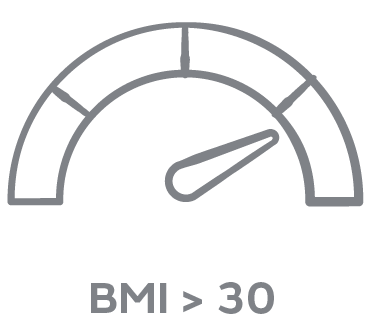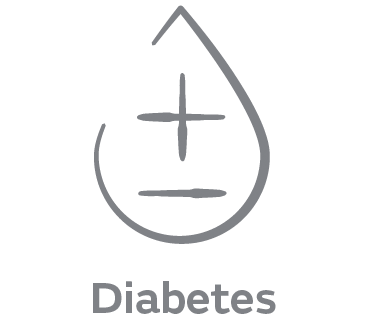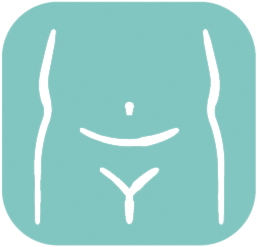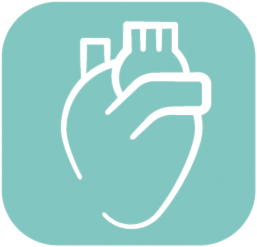PICO 14 sNPWT
Higher complexity demands higher standards
High-risk patients undergoing complex surgical procedures are at greater risk for surgical site complications (SSC)1 – and may require longer lengths of stay.2 Is standard care meeting the challenge?
![]()
Presence of just one of the following factors translates to a high-risk of SSCs:3,4
Diabetic patients are greater than 50% more likely to develop surgical sight infections (SSIs), with the highest incidence in cardiac surgeries5
These factors raise the risk of SSCs in all procedures, but can also lengthen hospital stays in more complex surgeries,2 such as:
- Coronary artery bypass graft (CABG)
- Laparotomy, including exploratory
- Abdominal hysterectomy, including radical
- Open colectomy, including radical
- Whipple (aka pancreaticoduodenectomy)
- Liver resection, including radical
95% of additional in-patient costs as a result of an SSI following colorectal surgery are attributed to the extra inpatient days.6
![]()
The negative pressure solution that raises standards – plus 14 days of therapy
60% of SSIs are preventable7 – but only if measures are taken. Designed for use with high-risk patients undergoing procedures that may require a longer length of stay, PICO 14 Single Use Negative Pressure Wound Therapy (sNPWT) raises your standard of care, delivering the same proven benefits of our PICO 7 sNPWT System with twice the therapy time.
What it delivers
The PICO sNPWT System has been proven to significantly reduce postoperative complications compared to standard dressings in several complex procedures:
Laparotomy 74% reduction of SSIs18
Pancreaticoduo-
denectomy 71% reduction of SSIs19
High-risk CABG 70% reduction of post-surgery wound complications20
This clinical efficacy translates into reduced healthcare burden:
Ordering information
| Dressing | Size | PICO 14 device + 2 dressings |
|---|---|---|
 |
10cm x 20cm |
66022042 |
|
10cm x 30cm |
66022043 |
|
|
10cm x 40cm |
66022044 |
|
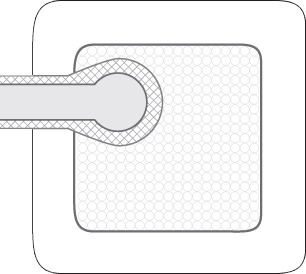 |
15cm x 15cm |
66022045 |
 |
15cm x 20cm |
66022046 |
|
15cm x 30cm |
66022047 |
|
 |
20cm x 20cm |
66022048 |
|
25cm x 25cm |
66022049 |
Request more information about PICO sNPWT
- Korol E, Johnston K, Waser N, Sifakis F, Jafri HS, et al. (2013) A Systematic Review of Risk Factors Associated with Surgical Site Infections among Surgical Patients. PLOS ONE 8(12): e83743.
- Analysis of procedure hospital length of stay. Premier Healthcare Database.
- Fowler, Vance & O’Brien, Sean & Muhlbaier, Lawrence & Corey, G & Ferguson, Jr, Thomas & Peterson, Eric. (2005). Clinical
Predictors of Major Infections After Cardiac Surgery. Circulation. 112. I358-65. 10.1161/CIRCULATIONAHA.104.525790. - Nherera, L.M., Trueman, P., Schmoeckel, M. and Fatoye, F.A., 2018. Cost-effectiveness analysis of single use negative pressure wound therapy dressings (sNPWT) compared to standard of care in reducing surgical site complications (SSC) in patients undergoing coronary artery bypass grafting surgery. Journal of cardiothoracic surgery, 13(1), p.103.
- Martin ET, Kaye KS, Knott C, et al. Diabetes and Risk of Surgical Site Infection: A Systematic Review and Meta-analysis. Infect Control Hosp Epidemiol. 2016;37(1):88–99.
- Tanner et al. (2009), Post-discharge surveillance to identify colorectal surgical site infection rates and related costs, J Hosp Infect 72; 243-250.
- Anderson, Deverick J., et al. “Strategies to Prevent Surgical Site Infections in Acute Care Hospitals: 2014 Update.” Infection Control and Hospital Epidemiology, vol. 35, no. 6, 2014, pp. 605–627.
- Karlakki S, Brem M, Giannini S, Khanduja V, Stannard J, Martin R. Negative pressure wound therapy for management of the surgical incision in orthopaedic surgery: A review of evidence and mechanisms for an emerging indication. Bone Joint Res. 2013;2(12):276- 84.
- Strugala, V., Martin, R. Meta-Analysis of Comparative Trials Evaluating a Prophylactic Single-Use Negative Pressure Wound Therapy System for the Prevention of Surgical Site Complications. Surg Infect (Larchmt). 2017;18(7):810-819.
- Smith & Nephew 2019.Pre-Clinical Assessment of Single-Use Negative Pressure Wound Therapy during in vivo Porcine Wound Healing. Internal Report. DS/19/313/R.
- Smith & Nephew January 2018. Outcomes following PICO compared to conventional dressings when used prophylactically on closed surgical incisions: systematic literature review and meta-analysis. Internal Report. EO/AWM/PICO/004/v1.
- Data on file reference 1102010 – Bacterial Barrier Testing (wet-wet) of PICO dressing with a 7 day test duration against S.marcescens; Helen Lumb, February 2011.
- Loveluck J et al. Biomechanical modelling of forces applied to closed incision during single-use negative pressure wound therapy. Eplasty 2016; 16e20.
- Kilpadi DV, Cunningham MR. Evaluation of closed incision management with negative pressure wound therapy (CIM): hematoma/seroma and involvement of the lymphatic system. Wound Repair Regen. 2011;19(5):588-596.
- Lalezari S, Lee CJ, Borovikova AA, et al. Deconstructing negative pressure wound therapy. Int Wound J. 2017;14(4):649-657. 13. Data on file reference 1102010 – Bacterial Barrier Testing (wet-wet) of PICO Dressing with a 7 day Test Duration against S. marcescens; Helen Lumb, February 2011.
- Karlakki S, Brem M, Giannini S, Khanduja V, Stannard J, Martin R. Negative pressure wound therapy for management of the surgical
incision in orthopaedic surgery: A review of evidence and mechanisms for an emerging indication. Bone Joint Res. 2013;2(12):276-84. - Glaser DA, Farnsworth CL, Varley ES, Nunn TA, Sayad-Shah M, Breisch EA, et al. Negative pressure therapy for closed spine incisions: a pilot study. Wounds. 2012;24(11):308-16.
- O’leary DP, Peirce C, Anglim B, et al. Prophylactic Negative Pressure Dressing Use in Closed Laparotomy Wounds Following Abdominal Operations: A Randomized, Controlled, Open-label Trial: The P.I.C.O. Trial. Ann Surg. 2017;265(6):1082-1086.
- Gupta R, Darby GC, Imagawa DK. Efficacy of Negative Pressure Wound Treatment in Preventing Surgical Site Infections after Whipple Procedures. The American Surgeon. 2017;83(10):1166-1169.
- Witt-Majchrzak A, Żelazny P, Snarska J. Preliminary Outcome Of Treatment Of Postoperative Primarily Closed Sternotomy Wounds Treated Using Negative Pressure Wound Therapy. Przeglad Chirugiczny. 2014;86(10):456-465.
PICO 14 sNPWT banner ad references:
- Matsumoto T, Parekh SG. Use of Negative Pressure Wound Therapy on Closed SurgicalIncision After Total Ankle Arthroplasty. Foot Ankle Int. 2015;36(7):787-794.
- Pellino G, Sciaudone G, Candilio G, et al. Effects of a new pocket device for negative pressure wound therapy on surgical wounds of patients affected with Crohn's disease: a pilot trial. Surg Innov. 2014;21(2):204-212.
- O'leary DP, Peirce C, Anglim B, et al. Prophylactic Negative Pressure Dressing Use in Closed Laparotomy Wounds Following Abdominal Operations: A Randomized, Controlled, Open-label Trial: The P.I.C.O. Trial. Ann Surg. 2017;265(6):1082-1086.
- Witt-Majchrzak A, Żelazny P, Snarska J. Preliminary Outcome Of Treatment Of Postoperative Primarily Closed Sternotomy Wounds Treated Using Negative Pressure Wound Therapy. Przeglad Chirugiczny. 2014;86(10):456-465.
- Adogwa O, Fatemi P, Perez E, et al. Negative pressure wound therapy reduces incidence of postoperative wound infection and dehiscence after long-segment thoracolumbar spinal fusion: a single institutional experience. The Spine Journal. 2014;14(12):2911 - 2917.
- Galiano RD, Hudson D, Shin J, et al. Incisional Negative Pressure Wound Therapy for Prevention of Wound Healing Complications Following Reduction Mammaplasty. Plast Reconstr Surg Glob Open. 2018;6(1):e1560.



